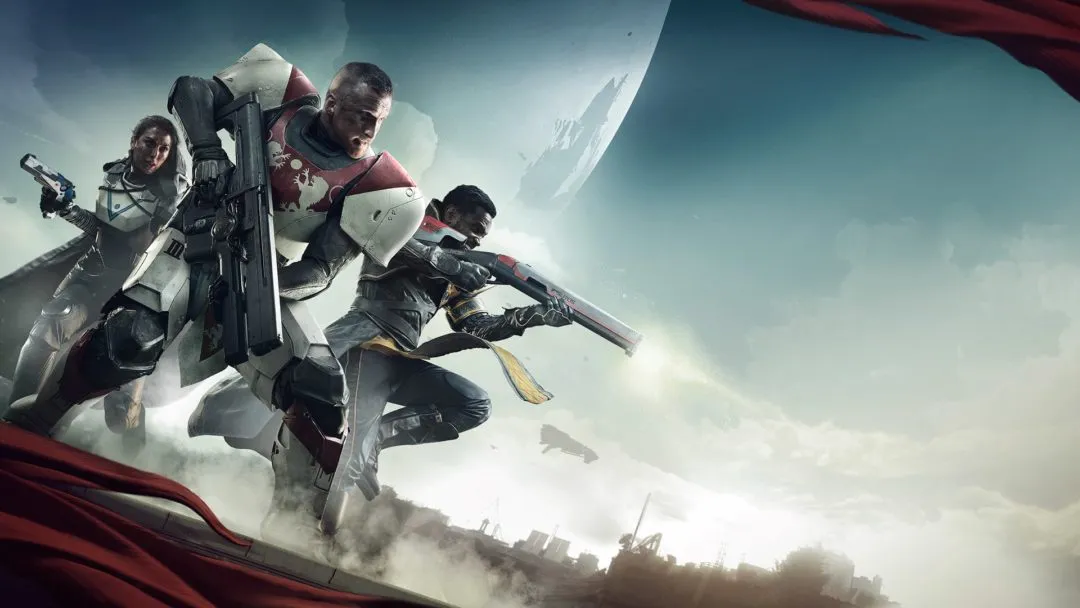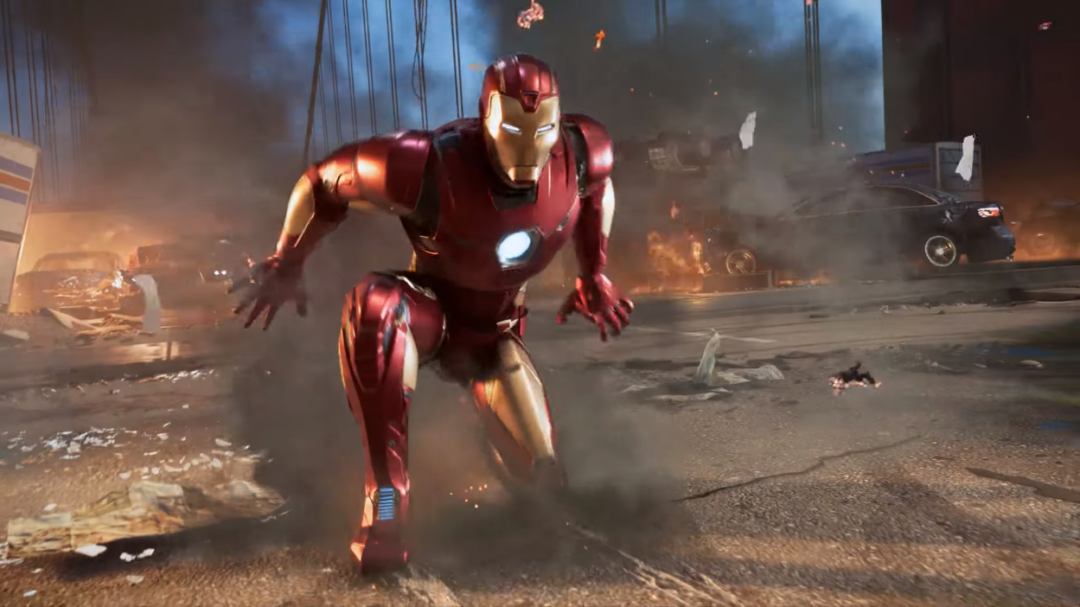
Wolfenstein: The New Order is better than it has any right to be. It could have been a pile of tired gameplay and schlocky plot, and the defense would have been, “Hey, it’s just a game about shooting Nazis based on a game from 1992. What did you expect?” The devs could have phoned it in. But the team at Machine Games wasn’t content with giving us an unending corridor of Bad Guys to mow down so they could ride the Wolfenstein name to the middle of the sales charts. I don’t know if anyone has ever expected anything particularly remarkable from this franchise. You’re expected to have Nazis, guns, and a few different ways to combine them for cheap, guilt-free visceral thrills. But instead they tried to make something special.
The game isn’t perfect or anything. But even the flaws are interesting in their novelty. This isn’t a modern military shooter where someone did a find & replace of “Terrorists” to “Nazis”. In fact, you’re basically a terrorist in this game. You don’t target civilians or anything, but there are parts of the game where you’re attacking non-military locations. Whatever complaints I might have about it, at least Wolfenstein: The New Order has the guts to make its own mistakes instead of just copying what everyone else is doing.
This is not a game that revels in death. This is a game that sees war and destruction as a necessary evil, if only because this Nazi society is so casual about its horrors. Lots of games have this “war is hell message” that runs directly counter to its “war is actually pretty fun” gameplay, and Wolfenstein is the first one in years that manages to pull it off. The fact that they manage to combine “Nazi prison camp” with “mecha suit combat” in the same game and get away with it is nothing short of amazing.
Last week Robert Rath had a great column on the thematic and story ideas at play in the game. It’s pretty interesting stuff, and not the kind of grim examination of war that you’d expect from a game bearing the Wolfenstein name. While Rath looked at the story and themes, I thought I’d look at the mechanics and art design.
And to make this more fun for me, I’ll use this brief moment of positivity as an excuse to complain about a bunch of other games. Here are all the common mistakes that TNO didn’t make.

It’s not about AMERICA!
I know I’m not the only one who’s gotten a bit weirded out by all the America-focus of the shooter genre. It’s like developers think that I’m going to give a game a pass just because I see my flag in it. It feels insincere, like someone shouting, “I LOVE NEW YORK!” when they’re performing in Madison Square Garden. What they’re actually saying is, “I love applause.”
Remember the WWII craze of the late 90’s and early aughts? If we learned anything from those games, it’s that World War II was a war between AMERICA and Germany, and that the plucky British helped out with the codebreaking. Japan, Russia, Poland, Australia, Italy, France, Austria, and China? As far as game designers knew, they were spectators and sideshows to the Roosevelt vs. Hitler main event.
Okay, that’s not quite fair. Some of the games were better about historical accuracy than others, but there was a huge focus on the war post Pearl Harbor. And I suppose it’s not really surprising that a lot of American-made videogames had a really heavy emphasis on the American contribution the the war. I wouldn’t have been shocked to see TNO continue that trend, particularly since the alternate-history conceit gave the writers a blank check to rewrite events as they saw fit. Finally, a chance to make WWII all about America!
Instead? The USA is barely mentioned. Main character Blazkowicz and a couple of friends (who might not even appear after the prologue, based on your choices) are the only people from the United States. There are only a few native English speakers in the game, and it’s implied that the language is dying. It’s clear that most of the rest of the resistance know it as a second or third language, and only bother to speak it for your benefit.
In this game, America is defeated off-screen, as an afterthought. We don’t see Washington or New York with all their iconic landmarks replaced with Nazi equivalents. The game isn’t about freeing America. There’s no cutscene showing the surrender of the President of the United States. America is gone, and the main characters don’t feel a need to go on about it because they have problems much closer to home. I don’t recall seeing a single American flag.

It’s not just a corridor shooter.
It’s been a while since I played a shooter with even a modest amount of branching level design. This isn’t a throwback to the 90’s or anything, but more like a throwback to the Half-Life 2 days where an attentive player could find a side-passage that would let them drop in behind their foes once in a while. There are shortcuts to take, secrets to find, and even the occasional puzzle to solve. It’s not Skyrim or Professor Layton, but there’s enough freedom and variety to keep things fresh. There’s even a light stealth mechanic that manages to reward covert play when you do well and transition gracefully to full-on combat when you mess up.
Best of all, the game makes judicious use of quiet time. Yes, I’ve linked that video before. Yes, I’m going to link it again in the future. I’ll link it every chance I get. I think it’s an important aspect of game design that devs have been routinely getting wrong. So many games are constantly dragging the player from one set-piece to the next, never allowing them to clear their head or think about what’s going on. I think it’s one of the reasons some five-hour games feel so much shorter than others. You need moments of quiet to bookend the destruction, and it should be up to the player when those moments end. Also, there’s a certain irony in developers lavishly spending more and more on scenery and then giving us less and less time to admire it.
I’m sure developers do this because they’re trying to maintain intensity, but after a few scenes of constant rushing it all blurs into a malaise of pestering and anxiety. You just can’t design an entire game as if it was one long movie climax.
TNO is content to let you stop for a breather. Sometimes things are chaotic, sometimes they’re calm, and sometimes everything is complete pandemonium. By varying intensity and letting the player set the pace the game creates a sense of scale and passage of time that makes the journey feel like more than a series of hallways where you gun down Nazis.
The game isn’t stuck in a thematic rut.
I realize that shooters are generally about war and war makes a lot of rubble, but there’s an upper limit on how much rebar and concrete I can look at in a single game session. TNO is really good about keeping the scenery fresh. Gothic Nazi castles. Modern fascist buildings. Old prisons. New prisons. Creepy retro-future science facilities. Museums dedicated to Nazi progress. (A brilliant one, giving a great way to change the scenery, deliver some exposition, and drive home just how much time has passed since the Nazis took over.) Office buildings. War-torn beaches. Domestic settings. The variety is so rich and varied I almost forgot to throw a fit when the sewer level showed up. (Not kidding about the sewer level.)

The characters aren’t pushy, overbearing nags.
This has become a pet peeve of mine over the last few years: Games where the NPCs will shout orders at you continuously, directing you to do even the most simple tasks and then haranguing you if you dare to stop to admire the scenery or scrounge around for resources. They explain every puzzle and tell you when to sneak, when to shoot, and when to stand beside a door and wait for someone to open it for you. TNO has a little of this, but it’s not this constant smothering that I’ve come to associate with modern shooters.
Even better, a lot of the conversations in the game take place without yanking control away from the player. Instead of locking you in place and making you watch a couple of people jabber at each other, you’re free to get on with things. If you don’t care, you can just run off. You can stay and listen while you ransack the room for goodies. You can listen with one ear while reading the bits of flavor-text newspaper clippings hung around the room. You can jump around on the furniture like an idiot. Or you can just stand there and watch them talk if you’re not into the whole “interactivity” thing.
There are a couple of points in the game where control is taken from you, but those are all brief and they make sense. (I don’t expect to be able to run around and play with the scenery while I’m being hauled into a labor camp prison.) There are also a couple of regular pre-rendered cutscenes. In a perfect world, the designers would have found a way to avoid resorting to this. But the cutscene vs. gameplay balance in TNO is better than I’ve seen it in ages and this is a big step in the right direction.
No quicktime events.
Not one. Thank you. See games industry? It’s not that hard.
Like I said, Wolfenstein: The New Order isn’t perfect. But this is the most fun I’ve had in a shooter since Valve stopped making them to go into the hat business.
Shamus Young is a programmer, a novelist, and a blogger.




Published: Jun 10, 2014 07:00 pm